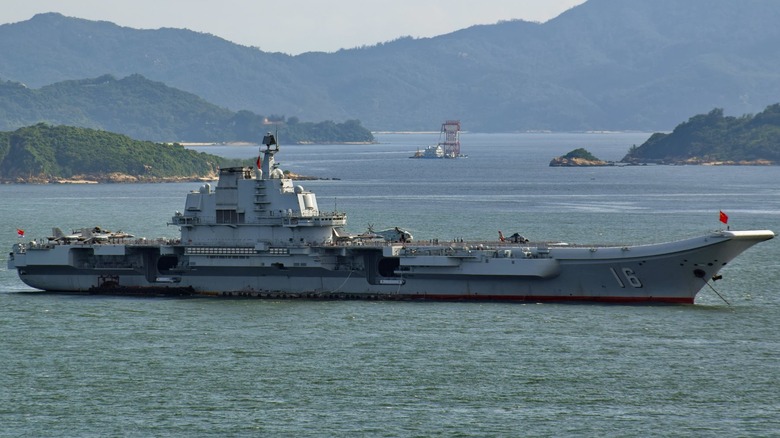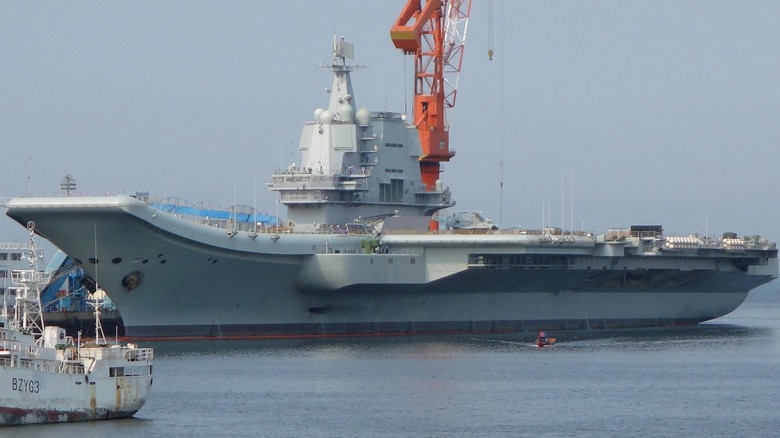How Many Aircraft Carriers Does China Have?
When most people think of aircraft carriers, they likely picture the United States Navy's sizeable fleet of 11 active nuclear carriers. The current model in production, the Gerald R. Ford-class, entered service in 2017. While it's true that the U.S. gets a lot of press for its impressive carriers, it's not the only nation that has them. Other nations, such as China, France, India, the United Kingdom, Italy, and Russia, also operate aircraft carriers, although they collectively have just as many as the U.S.
Granted, China and other nations also have helicopter carriers, though these are very different from traditional aircraft carriers. Next to the U.S., China boasts the largest fleet of flat tops, and it's growing much faster than any other nation. As of mid-2025, China has a fleet of three aircraft carriers, boasting a variety of improvements over previous models operated by other nations. This is important because, before China built its current fleet of carriers, it purchased them from outside the country, and 13 years ago, China had no carriers in its fleet.
China's current carriers include a refitted Soviet-era ship, the Type 001 Liaoning, which was finally commissioned into the People's Liberation Army Navy in 2012. Its second aircraft carrier, the Type 002 Shandong, is the first domestically produced carrier in the Navy's fleet. China commissioned it in December 2019. Finally, China's third vessel, the Type 003 Fujian, is a completely redesigned vessel and the largest in China's fleet, though it's smaller than Ford-class carriers. It began sea trials in 2024.
The People's Liberation Army Navy's aircraft carriers
While it would be disingenuous to compare the USS Gerald R. Ford to the Chinese aircraft carrier Liaoning, that doesn't mean China's first carrier isn't a good warship. It has been modernized, but its displacement of 60,000 tons of seawater places it far behind the Ford's 100,000 tons. The same is true of the Shandong, which is also a modern vessel that's considerably smaller than the best the U.S. has to offer. Granted, size isn't everything, as an aircraft carrier is only as good as the planes it launches and recovers via its catapult system.
China employed a short take-off but arrested recovery (STOBAR) system in its first two carriers, but installed a catapult-assisted take-off but arrested recovery (CATOBAR) system in the Fujian. None of the three vessels are powered by nuclear reactors. Instead, they use conventional steam turbines with diesel generators. While China is working on completing the Type 003, which is expected to enter service in 2026, it's already designing a replacement, the Type 004.
Unlike the previous three, the Type 004 will be powered by nuclear propulsion. While the technology is prevalent in the U.S., China began redesigning its nuclear-powered efforts in 2024 with the development of a new land-based prototype before moving on to the real thing. Ultimately, China aims to have six active carriers by 2035, and given the speed at which it has made its current fleet available, that appears to be a realistic goal.

